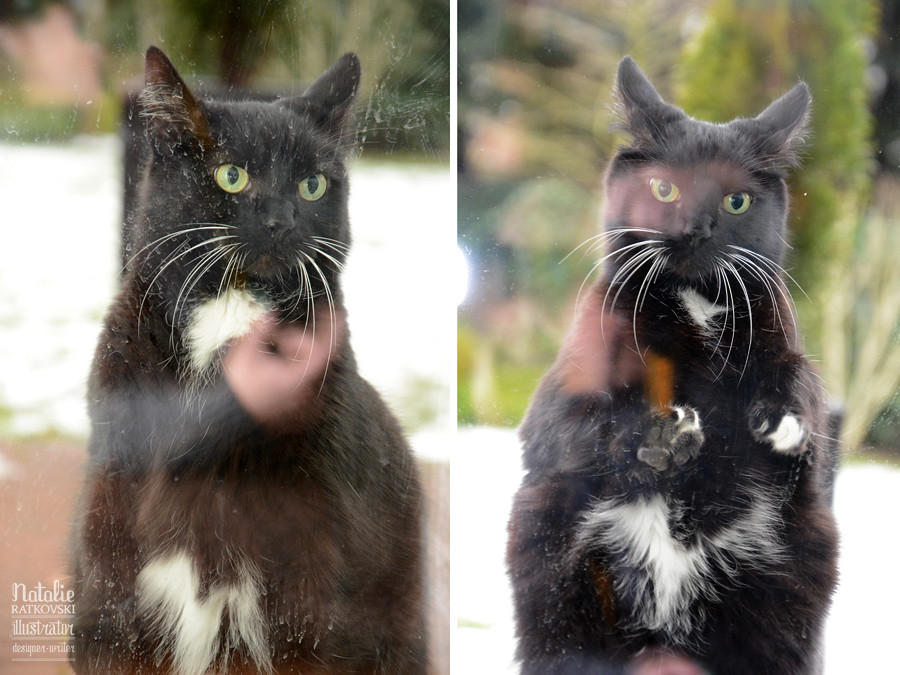
Кстати, это ещё фотография про то, что с такими кошками бесполезно мыть окна :-) (Розовое на фоне кошки - это моя рука отражается.)

![]()
When Japan was devastated by the Tōhoku earthquake and tsunami in 2011, countless families lost precious photos in their homes that washed away. In response, many organizations sprung up to recover, restore, and reunite photos with their owners.
One company that launched a huge initiative was Ricoh. In the four years following the disaster, the company’s “Save the Memory” project found and cleaned 418,721 photos, returning 90,128 pictures to the people who lost them.
Ricoh is now offering a glimpse of how this monumental effort was conducted for future reference. The company would be delighted “if this record is useful for improving awareness towards disaster prevention or reconstruction support activities after the event of a disaster,” it says.
The first step of the process was finding lost photos. Pictures were picked up from mud and debris by volunteers and organizations, who sent the prints in to Ricoh. Warehouses were used as photo collection sites.
![]()
Many of the photos and albums were heavily damaged by water, mud, and bacteria.
![]()
The photos were first displayed in the locations where they were found.
![]()
![]()
They were then packed up and sent to the projects factories.
![]()
![]()
![]()
Assembly lines of workers helped clean the prints by brushing off dirt and washing the photos with water.
![]()
![]()
![]()
![]()
Washed images were then hung up to try on nets using laundry pins.
![]()
![]()
![]()
Once dry, the photos were digitized by individual scanning. The images files were saved as JPEGs with a special control number that was assigned to each picture.
![]()
![]()
The digital scans were then rotated to a correct orientation and trimmed to remove irrelevant parts of each image. Final shots were organized by region found and by category — things like “black and white”, “children”, and “wedding photos”.
![]()
![]()
The original prints were inserted into protective plastic bags with their control numbers printed on them and shipped back to the regions where they were found.
![]()
![]()
A number of photo centers were set up in each region to allow locals to access the database of digital files.
![]()
![]()
People were asked to browse through the digital database in search of photos they had lost.
![]()
![]()
![]()
When the searchers stumble upon a photo that they lost, the print is easily retrieved using the control number associated with the file.
![]()
![]()
And that’s how Ricoh managed to save nearly 100,000 memories so far in four years of recovery work.
Save the Memory Project [Ricoh via Photoxels]
Image credits: Photographs by Ricoh/The Save the Memory Project
![]()
Lowepro is known for its extensive collection of sporty and durable camera bags, but one word that probably doesn’t come to mind when you think of the company is “luxury.” It wants to change that. Today Lowepro unleashed a new line of photo equipment luggage that “brings trusted protection to the discerning” photographer. It’s called Echelon.
“Don’t just get there. Arrive,” the webpage for the bag proclaims.
![]()
The Echelon series represents Lowepro’s first attempt at creating high-end bags geared toward “the fashionable, discerning professional who has perfected his or her craft.”
![]()
It’s a limited edition, three-piece set that includes a roller, attaché, and laptop brief. Some of the high-end features you’ll find include custom-cast metal hardware, saddle-stitched leather handles, a sleek design, 840 denier black nylon fabric, precision engineered fuse locking zippers, TSA-approved locks, and a removable all-weather cover.
![]()
The roller features a high-impact resistant interior and can store two pro DSLRs, 6-8 lenses, flash and lighting gear, accessories, and a 15-inch laptop.
![]()
The attaché holds one pro DSLR, 2-3 lenses, a flash, a 13-inch laptop, and some accessories.
![]()
Finally, the brief can hold a 15-inch laptop, a tablet, portable hard drives, and other small accessories.
![]()
You can purchase the Echelon roller, attaché, and brief from the Lowepro website for $800, $420, and $340, respectively.

После некоторых правок и замены части иллюстраций я наконец сумел выложить презентацию вводного занятия цикла «Переплётное дело 101» в сеть. Буду рад вашим комментариям, пожеланиям и рекомендациям =)
Все участники уже прошедших мастер-классов получат данную презентацию по почте в ближайшее время.
Natalia Pokrovskayaу меня был неоново-зеленый с неоново-розовым.....

Natalia PokrovskayaЭто же Ямал!
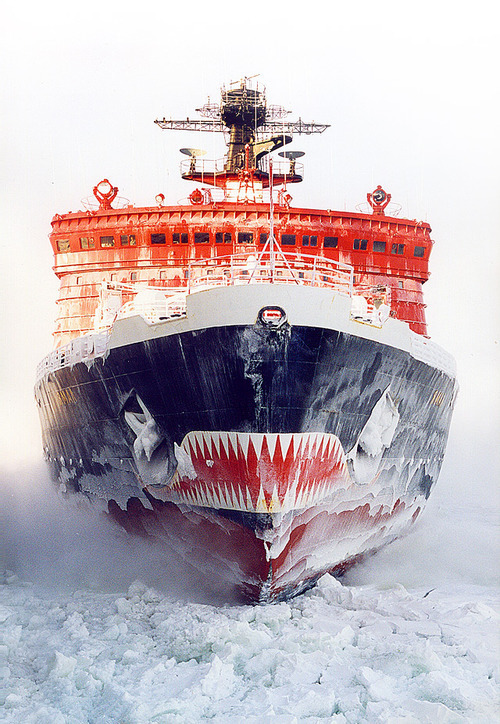
Natalia Pokrovskayaух ты

S’il y a bien quelqu’un qui sait comment subtilement parfumer un oreiller, c’est Diana Vreeland.
Je me souviens de ces petits sachets de lavande qu’on pouvait glisser sous son oreiller… ou dans un tiroir… Je ne sais plus trop, mais le résultat n’était pas hyper concluant, ça ne sentait pas si bon que ça et pour l’effet apaisant escompté, on pouvait repasser.
Par contre, la méthode de la seringue avec laquelle on injecte quelques gouttes de son parfum préféré directement dans l’oreiller me parle beaucoup plus… enfin, c’est peut-être juste moi… Bien sûr, ce n’est pas elle qui a conçu cette nouvelle collection mais son petit-fils Alexander a imaginé les senteurs en son honneur. En revanche, l’astuce de l’injection dans l’oreiller, c’est bien Diana !
En tout cas, à l’avenir, pour parfumer mes oreillers, ce sera Absolutely Vital. Merci, Diana !
Et vous, vous avez une senteur préférée ?
Parfums, dianavreeland.com

Natalia Pokrovskayaгде-то мы это видели.....
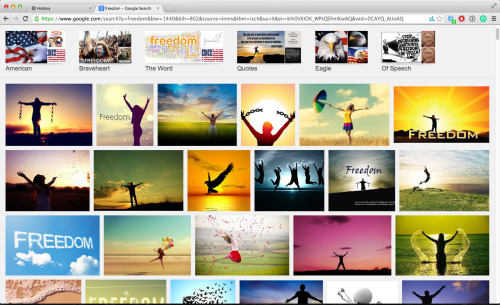

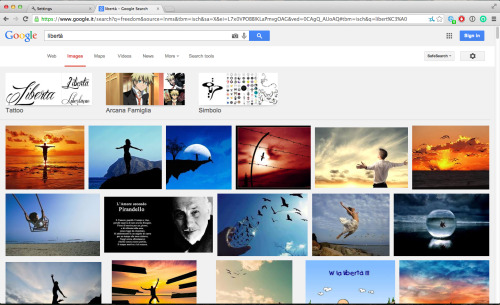
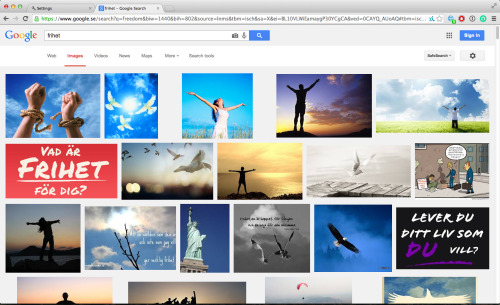

Googling Freedom - an album on Flickr
A question from Tassos Stevens: “What do you get if you google image search ‘FREEDOM’? Are we same or different?”
Although the question is about how individual browsing data affects what is seen, these images test how location, without other data, affects it.
These are the image search results using a Tunnelbear VPN (virtual private network) to access Google from 13 different countries. A VPN allows you to send your internet traffic privately to another place before it is visible on the internet, so you appear to be located elsewhere. All browsing data was erased between connections.
For each country, the word “freedom” was used as a search term. In countries where English is not the first language, the local translation for “freedom” was also used. This distinction is made in the image titles (e.g. “Freedom France” v “Freedom French”).
In almost all cases, google.com auto-directed to the local site (google.de, google.co.uk, google.ca etc). The exceptions to this were the Netherlands endpoint, which stayed with google.com, and the French endpoint, which redirected to google.be (Belgium).
Some notes:
- In Australia, “freedom” is closely associated with a brand of furniture.
- In Japan, the Japanese word for “freedom” is closely associated with America.
- In Switzerland, the Romansch word for “freedom” was used, as Italian, French and German were tested elsewhere. This is “libertad”, which is the same as the Spanish word for “freedom”, resulting in almost identical results.
- The Irish word for “freedom” is the first name of a popular actress.
![]()
Colorizing old black and white photographs in Photoshop has become quite a trend over the past few years, and communities of retouchers have sprung up in order to share and compare their work.
One particular colorizer named Jordan Lloyd has decided to turn his hobby into a business called Dynamichrome. It specializes “in high fidelity colour reconstruction services in culture, history and entertainment.”
Lloyd comes from the world of architecture, which trained his eye and Photoshop skills for the tedious process of eyeballing colors and digitally “painting” them by hand into images. Clues as to which colors to use often come from other historical photos that were captured in color.
Here are a couple time-lapse videos (along with before-and-after photos) showing how Lloyd went about restoring and colorizing two particular photos. He will be posting these types of videos to his YouTube channel:
![]()
![]()
Lloyd is also sharing some examples through the @dynamichrome Instagram account:
Here are some more before-and-after examples of colorizations done by Dynamichrome:
![]()
![]()
![]()
![]()
![]()
![]()
![]()
![]()
![]()
![]()
![]()
![]()
![]()
You can find some other examples, as well as hire Lloyd’s services for your own needs, over through the Dynamichrome website.
Dynamichrome (via Fstoppers)
Image credits: Colorizations by Jordan Lloyd and used with permission
![]()
Instant photos are fun and were at one time super popular, but they aren’t exactly cheap. Shooting with new Impossible Project film costs about $3 per shot these days. But what if you could shoot casual instant snapshots on a physical medium for less than a penny per shot?
That’s the idea behind the PrintSnap. It’s an instant camera that captures photos on standard receipt paper.
The project is the brainchild of Michael Ciuffo, a Seattle-based electrical engineer who graduated from MIT in 2011. He made this short video introducing the camera:
For the past three months he has been working at building a new camera that can print fun shots onto thermal paper — the same kind used by receipt printers. It’s a special paper that has a chemical coating that changes color when exposed to heat, and it’s super cheap: Ciuffo estimates that each shot will cost just $0.003.
In other words, for the price of one Impossible Project shot, you’ll be able to capture 1,000 photos using his camera. Here are sample photos captured using the PrintSnap:
![]()
![]()
![]()
![]()
![]()
![]()
![]()
![]()
Of course, photo quality won’t be great, but the camera’s 640×384 resolution (in 3×1.75 inches) is “more than high enough to capture your precious memories on real, physical paper.” It’s a camera designed to let you freely create physical prints without having to worry about doing damage to your pocketbook.
The PrintSnap can store 50 feet of standard 2 1/4-inch thermal paper (available wherever office supplies are sold), allowing you to capture up to 150 photos before having to change your “film.”
Ciuffo’s current prototype of the camera — which weighs 1.45 pounds and measures 3.25×6.75×3 inches — is crafted out of walnut wood, but he plans on selling a cheaper plastic version of the camera.
![]()
![]()
Over on his website, Ciuffo has documented the creation process of his camera through a series of in-depth articles.
If you’re interested in purchasing a PrintSnap, keep your eyes open for a Kickstarter campaign that will allow you to pre-order one while funding the project (there’s a mailing list you can sign up for on the website). The camera itself won’t be as cheap as the film, though: Ciuffo says that the wooden prototype camera cost $200 in parts alone.
Printsnap [ch00ftech via Reddit]
![]()
(Newswire, December 13th, Las Vegas) — A group of leading photographers, curators, and general taste arbiters has determined that Peter Lik’s sale of a photograph may constitute torture under the Geneva conventions.
The photograph in question, an open edition of a mundane Southwestern landscape, sold recently for $6.5 million, the largest figure for a photograph in history.
The sale, announced in an artistically unsanctioned press release which circumvented auction houses and was generally agreed upon as “fishy”, was conducted in conjunction with two others totaling $10 million. Rubbing salt in the wound, the buyer remained anonymous. For members of the art establishment, the dynamics of the sale amounted to waterboarding or other practices causing extreme mental anguish.
The photo in question. An investigation is under way to determine if its sale constitutes torture.
The alleged torture had several components. One major factor was the artist’s lack of museum connections. Lik is based in Las Vegas, a sensual city rumored to be somewhere between New York and Los Angeles. It is a popular tourist destination among the working classes but holds scant artistic provenance, and Lik has no official ties to the sanctioned photography community. “I’ve never even heard of him,” said officially approved photographer Martin Parr. “It’s pretty astonishing. He has no standing whatever in the fine-art world that I belong to.”
That an upstart would dare break the sales record, previously held by officially approved artist Andreas Gursky, was perceived as an affront to common decency. But the nature of the torture was exacerbated by the notably inferior quality of the print in question. In contrast to Gursky’s dynamic and exciting Rhein II, Lik’s landscape is viewed as stark and simplistic. The photograph shows a ghostly patch of light in a canyon and carries the unironic caption Phantom. “It’s an abomination,” according to Michael Hopper, an officially approved gallerist based in the United Kingdom.
The sale of the photo is believed to be torturous for other reasons. First, the subject matter depicts a notable photo op. Antelope Canyon has been photographed thousands of times, long since draining all sense of originality or creative thought. In this context Lik’s procedure was deemed medically and aesthetically unnecessary. More painfully, the image in question is believed to be overly sentimental and picturesque, two qualities thought to be safely weeded out of officially certified fine art after years of struggle.
More importantly, the earthly and common quality of the subject matter conveys a spirit of accessibility which, if spread, is believed to threaten the pantheon. “If you go to a Sherman show or look at a Steichen print,” says Hopper, “this is quality and creativity that is unobtainable to the man on the street.” By encouraging the lower classes to believe they might be artistic, Lik’s sale is thought to be a dangerous provocation.
The grisly techniques listed above are claimed to constitute torture in and of themselves. But, according to photographic leaders, the most dire threat goes to the financial heart of the matter. Fine art photography has been officially classified as a passive investment vehicle in which wealthy patrons may park their money temporarily. A piece of fine art confers an aura of respectability on the purchaser while appreciating in value, characteristics unavailable to, say, real estate or pharmaceutical concerns. A healthy network of auction houses has been established to determine artistic value in exchange for a cut of the action.
But Lik’s photograph has no resale value. By challenging investment logic, Lik threatens to topple it. It’s thought that if people buy art just because they like it, and with no thought of investment potential, the floodgates will open to the masses. Failure to provide oversight may lead to critical lapses, and unsanctioned opinions may gain influence. The torturous impact of this thought is so extreme that photographic leaders cannot tolerate it for more than a few minutes at a time.
Lik claims that his sales practices are humane and legal, but his controversial tactics have been universally panned by sanctioned art critics. They are thought to be not only wrong but counterproductive, providing little new information to art history. When an officially approved photographer is subjected to a sale such as Lik’s, they’re willing to say anything in order to alleviate the pain.
About the author: Blake Andrews is a photographer based out of Eugene, Oregon. He has been shooting photos consistently since 1993, ‘with occasional one hour breaks.’ This article originally appeared here.
Editor’s note: As with Jeff Frost’s “press release” published earlier today, this article is a tongue-in-cheek take on current events.
Image credit: Header graphic based on photograph by Dennis Jarvis
Сегодня утром из рассылки Александра Гришина узнал такую историю.
Александр решил провести вебинар о сценарном деле. Нашел хорошего спикера и сделал у себя на сайте черновую страничку с формой записи. На странице была только форма, никакого продающего текста.
Видимо, чтобы протестировать, как все работает, Александр эту страницу опубликовал по секретному адресу. Несмотря на это, страница подсосалась в РСС. Мейлчимп ее увидел и сделал автоматическую рассылку по базе читателей. В письме, которое он разослал, было пять фраз:
Как писать для кино и ТВ
Автор: Александр Гришин
О чем вы узнаете
С чего начать написание сценария
Читать далее
Читатели получили письмо с вот этими словами и ссылкой на пустую страницу с формой регистрации. Подписалось 30 человек.
Я не знаю, какого размера база Александра Гришина и насколько это хороший результат. Но вот интересное дело: люди кликнули на ссылку и записались на вебинар, несмотря на то, что в письме и на странице не было никакого продающего текста. Вообще никакого. Никакусенького. Даже слова «Бесплатно».
Продающие копирайтеры в этот момент:

Классный парень Александр придумал годный продукт: вебинар о том, как писать сценарии. Читателям Александра этот продукт интересен, потому что они редакторы и писатели.
На рынке нет аналогичных предложений. Сценарное дело — занятие дорогое. Мало кто его упаковывает в простые доступные форматы. По крайней мере, я не встречал вебинаров или коротких курсов о драматургии и сценариях. Конкуренция невысокая.
У Александра хорошая репутация, потому что он старается быть полезным: пишет хорошие статьи, спамит мало и по делу, продукты продает интеллигентно. Читатели ему доверяют.
Человек с хорошей репутацией придумал конкурентоспособный продукт и сообщил о нем нужной аудитории. Аудитория сказала «Окей, заверните».
Хороший продукт + доверие = ❤
Понятно, что если бы на странице сразу была подробная информация, записалось бы больше людей. Кто-то подумал, что это ошибка, и вебинара на самом деле не будет. Кто-то задался вопросом, почему это Гришин будет учить всех сценарному делу (на самом деле не он). Естественно, просто голой страницы было мало.
Но благодаря хорошей репутации и правильному продукту не нужен был тот адовый продающий текст, который так любят коллеги. Потому что люди покупают не потому, что «текст», а потому что видят пользу в продукте.
Хороший продукт работает лучше, чем хороший продающий текст.
Natalia Pokrovskaya2 месяца аренды студии в центре СФ )

To Rise — Self Portrait, 2014
72” x 60” x 1.75”
Acrylic, graphite, oil, spray paint and charcoal on canvas $5,200 +tax and shipping
![]()
In 2011, photographer Jessamyn Lovell was at San Francisco gallery SF Camerawork when her wallet was stolen. Not long after, the unauthorized charges started pouring in.
Infuriated at what was taking place, Lovell decided to track down her thief rather than simply replace her cards and move on with her life. In doing so, she turned this art gallery mishap into an art project all its own.
With the help of Pete Siragusa, a private investigator, Lovell was able to track down her wallet thief, a woman by the name of Erin Coleen Hart. Lovell initially intended on confronting Hart upon finding her identity, but at a strong suggestion from Siragusa, she decided not to.
Instead, Lovell decided to play a game of cat and mouse, following her throughout the city streets and snapping photos when the opportunity arose.
![]()
After gathering up as much information as possible on Hart, Lovell flipped the switch on her mastermind of a project. Using 34 images of the scam artist that she had captured around town, Lovell created Dear Erin Hart, a photo exhibition that would be displayed at SF Camerawork, the same gallery where her wallet was stolen.
And the cherry on top? She mailed an invitation for the exhibition to Hart herself.
![]()
![]()
![]()
![]()
![]()
![]()
![]()
![]()
![]()
![]()
![]()
![]()
To see more of Lovell’s work or find out more about this project, head over to her website, here. You can also read a more detailed version of the story on SFGate
(via Booooooom)
For Raíces aladas, or Winged Roots, Spanish-born photographer David Catá constructs a small pocket of flesh within his palm by tearing away superficial layers of skin, into which he places a sampling of earth and the stem of a rose. Recording the process with his camera, he condenses elements of performance art into a series of still frames, speaking to themes of impermanence, loss, and rebirth.
This isn’t Catá’s first foray into body modification; last year, he made a splash with a flor de piel, for which he sewed portraits of family members and loved ones into his flesh. Raíces aladas evolves from his previous practice with breaking skin, and the process of rupturing the skin and introducing the soil and plant elements usually takes about ninety minutes of his time. For him, the project functions as a visual diary of his move from his home in Viveiro, Galicia to Berlin, Germany. With this transition, the artist was transplanted, left grieving the loss of his friends, familiar surroundings, and the Spanish language.
As with the rose severed from its roots, the photographer felt cut off from his origins and yet he anticipated his own rebirth and growth. Here, corporeal violence stands in for the fracturing the human psyche undergoes as circumstances change and memories are lost, but this acute pain ultimately gives rise to something unexpected, raw, and resplendent.
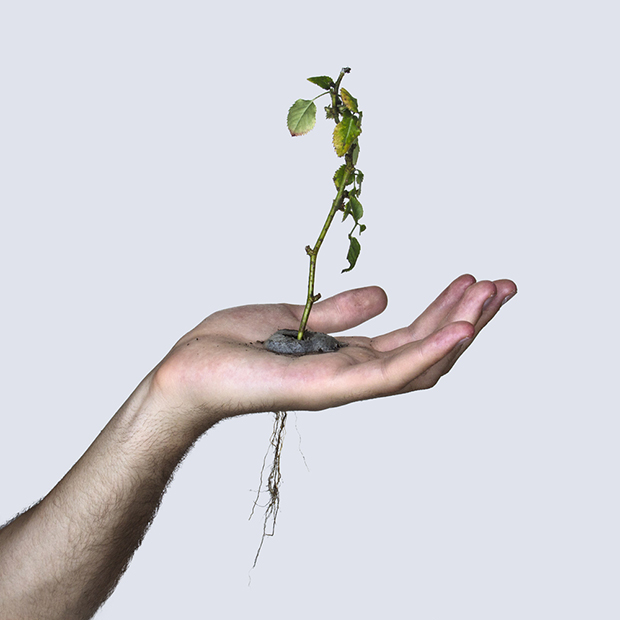
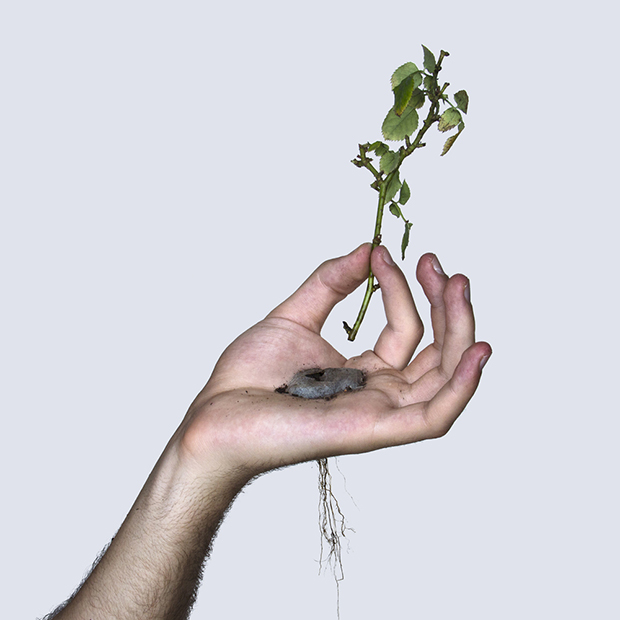
All images © David Catá
via Beautiful/Decay
The post Photographer David Catá Plants Roses Into His Flesh appeared first on Feature Shoot.
![]()
Casio has officially unveiled its latest point-and-shoot camera. Its official name is the Exilim MR1, but to the general public, it’s more likely to go by its street name, the ‘Kawaii Selfie by Mirror Cam.’
As the name suggests, this camera is designed with one thing in mind: selfies.
The 14-megapixel camera features a rather unusual form factor, as there is no visible lens element. Instead of being out there for the world to see, the unusually slow f/5 lens is hidden behind a two-way mirror of sorts that allows users to more perfectly frame the shot when they turn the camera on themselves.
![]()
To further refine its niche market, the MR1 doesn’t seem to be designed for men, considering it comes in only pink, white and an aqua-green of sorts.
![]()
The camera’s other specs are, un-surprisingly, subpar compared to what’s out there in the market today. It sports a 2.7-inch LCD screen, WiFi connectivity and a 700mAh battery that will get you 230 still images or 35-minutes worth of 1080p video per charge.
![]()
The concept is an… interesting one… to put it mildly. If you’re looking to pick one of these up for yourself or your selfie-obsessed friend, you can do so for the price of $330. For more info, click here to head over to Casio’s page for the new mirror cam.
(via Engadget)

The mussel shell found in Indonesia scratched with a zigzag believed made by Homo erectus, which would make it the oldest art (all photos courtesy Wim Lustenhouwer, VU University Amsterdam)
The history of artistic expression got stretched back a few hundred thousand years this week with the identification of an engraved shell believed to have been carved by Homo erectus. That early human ancestor could rattle the long-held belief that the use of deliberate visual expression is specific to Homo sapiens.
As National Geographic reported, the mussel shell is marked with deep zigzags and is believed to be at least 430,000 years old, much more ancient than the South African cave art dating between 70,000 and 100,000 years ago that was previously considered the world’s oldest. The shell was unearthed from an Indonesian riverbank in the 1890s by an expedition led by Eugène Dubois. However, it wasn’t until seven years ago that researchers noticed something significant about the shell.
Archaeologist Josephine Joordens of Leidens University in the Netherlands collaborated with anthropologist Steven Munro on research published this week in the journal Nature titled “Homo erectus at Trinil on Java used shells for tool production and engraving.” They note that the “manufacture of geometric engravings is generally interpreted as indicative of modern cognition and behaviour,” and is often considered unique to Homo sapiens. However, their data indicates that the engraving was made by Homo erectus and is thus “considerably older than the oldest geometric engravings described so far.”
Zigzags were apparently a popular early design choice for hominin artists — one also appears on the Cooper Skull, the oldest painted skull in the Americas. However, what will really affirm the use of abstract symbols as a pre-Homo sapien ability will be more examples. It’s significant to note that the shell site in Java, Indonesia, is also where Dubois in the 19th century found and identified the Java Man, which introduced Homo erectus as a missing link in human ancestry. It was a controversial idea at the time, later supported by similar finds in Asia and Africa. Perhaps now that researchers have found the hidden details on this artifact, other archaeologists and anthropologists might take a closer look at other Homo erectus remains, and see just how far back the human impulse for visual expression goes.
Read the complete “Homo erectus at Trinil on Java used shells for tool production and engraving” article online in the journal Nature.
![]()
Given Comet 67P is, after all, a rock, and given that gray rocks are not uncommon, you would be forgiven for thinking that the photos of the comet that we’ve seen thus far were in color. That, however, is not the case. What you’re seeing above is actually the first true color image of Comet 67P taken by the ESA’s Rosetta spacecraft.
Part of a new research paper, the photo was captured by Rosetta’s OSIRIS Narrow Angle Camera in a similar way as the very first color photograph — meaning it’s actually a combination of three exposures: one taken with a red filter, one with a green filter, and one with a blue filter. Those three images are then superimposed to create a true color image.
This also explains why the image is a bit blurry. As the GIF below by Reddit user Hexorg shows, the comet and Rosetta both were moving between the R, G and B exposures:

Nothing a little bit of Photoshop won’t fix though. Redditor IG-64 followed up Hexorg’s channel splitting GIF by color correcting and sharpening the final shot to produce this:
![]()
If you want to see more of the comet, the paper’s author’s reveal that they will be releasing a higher-res image of 67P on December 18th, so keep an eye out for that.
(via Sploid)
Image credits: Photograph courtesy of the ESA.
Natalia PokrovskayaКрутизна
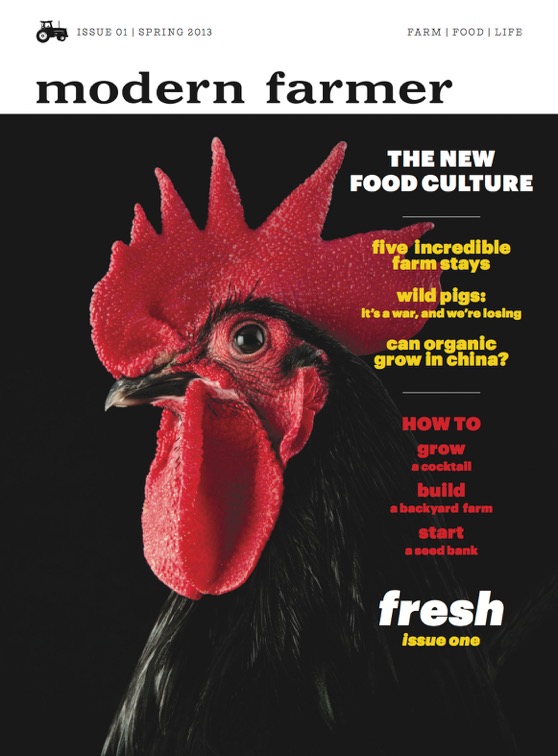
Can you share the cover direction? It is always an animal portrait to set the magazine apart from others?
LS & AQ: As the first issue was coming together, we were defining the aesthetic of the magazine and looking for an image that was striking and would set us apart on the newsstand. It was an organic process, working with the art director, Sarah Gephart, and the editors to refine that vision. Richard Bailey’s rooster was one of many options we tried for the cover, but we knew the minute we saw it that it worked. He really is a handsome rooster! The great thing about having an animal on the cover of each issue is that it allows for many different audiences to identify with the magazine. Richard has shot every cover since then and these animal portraits have really come to define the visual identity of Modern Farmer.
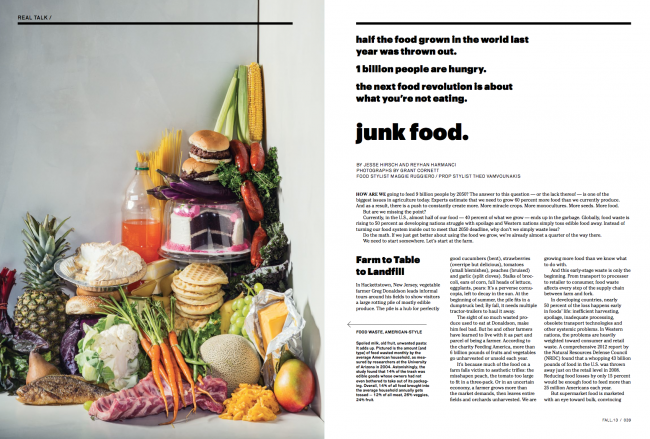
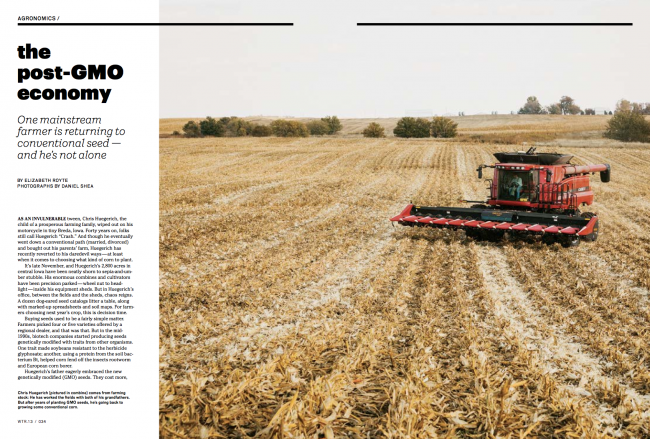
Do you use your still life opportunities to off set or surprise the readers?
LS: It is great to be able to create a polished and poppy product shoot for a farming magazine where it’s so unexpected. It’s also an opportunity to work with talented set designers such as Angharad Bailey. Together with the great Tom Schierlitz she conceived a crisp and graphic story that brought a strong sense of design in sharp contrast to the environmental images running throughout the rest of the magazine.
Buying a new website?
APhotoFolio.com builds portfolio websites for photographers.
Have a look (here).



It’s Official: AIs are now re-writing history | Robert Elliott Smith
The other day I created a Google+ album of photos from our holiday in France. Google’s AutoAwesome algorithms applied some nice Instagram-like filters to some of them, and sent me emails to let me have a look at the results. But there was one AutoAwesome that I found peculiar. It was this one, labeled with the word “Smile!” in the corner, surrounded by little sparkle symbols.
It’s a nice picture, a sweet moment with my wife, taken by my father-in-law, in a Normandy bistro. There’s only one problem with it. This moment never happened. […]
Note the position of my hands, the fellow in the background, and my wife’s smile. Actually, these photos were a part of a “burst” or twelve that my iPhone created when my father-in-law accidentally held down the button too long. I only uploaded two photos from this burst to see which one my wife liked better.
So, Google’s algorithms took the two similar photos and created a moment in history that never existed, one where my wife and I smiled our best (or what the algorithm determined was our best) at the exact same microsecond, in a restaurant in Normandy.
via Dan W.
Natalia Pokrovskayaда блин
Books about photobooks have been a rapidly expanding subject for the past few years, with seemingly several appearing every month – whether broad surveys, single photographer or country/region references, exhibition catalogs, etc. The first Book on Books on Artist Books appeared a few years ago to further establish this as a category and I’ve been collecting them (as a subset of the overall photo/artist book collection) for a number of years. They are both reference material and also sometimes wonderfully made books in their own right (they’re also alas a way of expanding one’s wishlist, too).
It’s also been an opportunity to start thinking about both a taxonomy of books on photobooks and about criteria for what makes a more or less successful one and I’m hoping this might be an opportunity to instigate more discussion about that topic.
pre-history
McCausland, Elizabeth. “Photographic Books”, Complete Photographer Vol. 8, Issue 43
New York: National Educational Alliance, 1942
Goldschmidt, Lucien & Naef, Weston J. The Truthful Lens – A Survey of the Photographically Illustrated Book, 1844-1914
New York: Grolier Club, 1980
the canon
Fernández, Horacio. Fotografía Pública – Photography in Print, 1919-1939
Madrid: Museo Nacional Centro de Arte Reina Sofía & Aldeasa (pub.), 1999
TR145.F67 1999
Parr, Martin & Badger, Gerry. The Photobook: A History, Volume l
London: Phaidon, 2004
TR15.P37 2004
Parr, Martin & Badger, Gerry. The Photobook: A History, Volume II
London: Phaidon, 2006
TR15.P37 2006
Parr, Martin & Badger, Gerry. The Photobook: A History, Volume III
London: Phaidon, 2014
TR15.P37 2014
Roth, Andrew. The Book of 101 Books – Seminal Photographic Books of the Twentieth Century
New York: PPP Editions in association with Roth Horowitz LLC, 2001
TR145.B66 2001
Roth, Andrew. The Open Book – A History of the Photographic Book from 1878 to the Present
Göteborg, Sweden: Hasselblad Center, 2004
TR145.O64 2004
single artist
Iizawa, Kotaro. Arakibon 1970-2005 – A Book of Araki Books!
Tokyo: Bijutsu Shuppan-sha, 2006
TR145.A72 2006
Kohara, Masashi & Nagahara, Koji. Shashin shūkyō Arākī – Ararchy Photobook Mania
Shizuoka: Izu Photo Museum & Nohara, 2012
TR647.A72 2012
Schube, Inka. Boris Mikhailov: Bücher – Strukturen des Wahnsinns, oder warum Hirten in den Bergen oft verrückt warden – Fotomanie auf der Krim; Boris Mikhailov: Books – Structures of Madness, or Why Shepherds Living in the Mountains Often Go Crazy – Photomania in Crimea
Hannover: Sprengel Museum; Köln: Walther König, 2013
TR140.M354 2013
Basilico, Gabriele. Photo Books 1978-2005
Mantova, Italy: M. Corraini, 2006
Suzuki, Kiyoshi. Soul and Soul 1969-1999
Groningen, NL: Stichting Aurora Borealis & Noorderlicht, 2008
TR647.S891 2008
Region/Country
Morioka, Yoshiyuki. Nihon no taigai senden gurafu-shi – Books on Japan 1931-1972
Tokyo: BNN, Inc., 2012
TR145.M67 2012
Kaneko, Ryūichi & Vartanian, Ivan. Japanese Photobooks of the 1960s and ’70s
New York: Aperture, 2009
TR105.K36 2009
Carson, Matthew; Lang, Michael; Lederman, Russet & Yatskevitch, Olga. 10×10 Japanese Photobooks
New York: 10×10 Photobooks, 2014
Kern, Magrit. España a través de la cámara
Leipzig: Plöttner, 2008
Fernández, Horacio. Photobooks Spain 1905-1977
Madrid: Museo Nacional Centro de Arte Reina Sofia & Acción Cultural Española, 2014
Núñez, José Arturo Rodríguez. Hojeando . . . Cuatro décades de libros y revisits de artista en España = Leafing . . . Four Decades of Artists’ Books and Magazines in Spain
Madrid: Sociedad Estatal para la Acción Cultural (SEACEX), 2008
Scholz-Hänsel, Michael. Spanien im Fotobuch – von Kurt Hielscher bis Mireia Sentís – eine imaginäre Reise von Barcelona in die Extremadura
Leipzig: Plöttner, 2007
Wiegand, Thomas. Deutschland im Fotobuch – 287 Fotobücher zum Thema Deutschland aus der Zeit von 1915 bis 2009
Göttingen, Germany: Steidl, 2011
TR145.W54 2011
Koetzle, Hans-Michael. Eyes on Paris – Paris im Fotobuch – 1890 bis heute
Hamburg: Haus der Photographie, Deichtorhallen; Munich: Hirmer Verlag GmbH, 2011
Bouqueret, Christian. Paris, les livres de photographie, des années 1920 aux années 1950
Paris: Gründ, 2012
Pfrunder, Peter; Gasser, Martin & Münzenmaier, Sabine. Swiss Photobooks from 1927 to the Present – A Different History of Photography
Winthertur, Switzerland: Fotostiftung Schweiz; Baden, Switzerland: Lars Müller Publishers, 2012
TR145.S39 2012
Brunner, Laurenz & Wälchli, Tan. The Most Beautiful Swiss Books 2007 – Back to the Future Book – Vol. 1 – The Past Issue
Bern: Bundesamt für Kultur, 2008
TR145.M67 2007
Brunner, Laurenz & Wälchli, Tan. The Most Beautiful Swiss Books 2008 – Vol. 2 – The Present Issue
Bern: Bundesamt für Kultur, 2008
TR145.M67 2008
Brunner, Laurenz & Wälchli, Tan. The Most Beautiful Swiss Books 2009 – Vol. 3 – The Future Issue
Bern: Bundesamt für Kultur, 2010
TR145.M67 2008
Lehmann, Aude & Wälchli, Tan. The Most Beautiful Swiss Books 2010
Bern: Swiss Federal Office of Culture, 2011
TR145.M67 2010
Lehmann, Aude & Wälchli, Tan. The Most Beautiful Swiss Books 2011
Bern: Swiss Federal Office of Culture, 2012
TR145.M67 2011
Lehmann, Aude & Wälchli, Tan. The Most Beautiful Swiss Books 2012
Bern: Swiss Federal Office of Culture, 2013
TR145.M67 2012
Gierstberg, Frits & Suermondt, Rik. The Dutch Photobook – A Thematic Selection from 1945 Onwards
Rotterdam: NAI, 2012
TR145.D87 2012
Eskola, Taneli. Suomen painettua valokuvataidetta 1966-2003 – Finnish Photo Books 1966-2003
Helsinki: Musta Taide, 2003
Novospasskiĭ, V. (Vilenin). Fotografii︠a︡ v knige
Moskva: Izd-vo “Kniga”, 1973.
TR145.N68 1973
Toman, Jindřich. Modern Czech Book 2 – Foto/montáž tiskem – Photo/Montage in Print
Prague: Kant, 2009
Fernández, Horacio. El Fotolibro Latinoamericano
Mexico City: Editorial RM, 2011
TR145.F47 2011
Fernández, Horacio. The Latin American Photobook
New York: Aperture; Mexico City: Fundación Televisa, 2011
TR145.F47 2011
Villaro, Leandro. The Photobook in Argentina
New York: Library of the International Center of Photography & Leandro Villaro, 2011
R TR145.V555 P46 2011
Villaro, Lenadro. The Photobook in Chile
New York: Library of the International Center of Photography & Leandro Villaro, 2014
TR145.V555 2014
Sira, Victor. Venezuelan Photobooks & Catalogues
New York: Library of the International Center of Photography, 2010
R TR145.S571 2010
Carson, Matthew; Lederman, Russet & Yatskevitch, Olga. 10×10 American Photobooks
New York: 10×10 Photobooks & bookdummypress, 2013
R TR145.A44 2013
Other
Heiting, Manfred & Jaeger, Roland. Autopsie – deutschsprachige Fotobücher 1918 bis 1945
Göttingen, Germany: Steidl, 2012
TR145.A87 2012
Schäfke, Werner & Heuberger, Roman. Köln und seine Fotobücher – Fotografie in Köln, aus Köln, für Köln – im Fotobuch von 1853 bis 2010
Köln: Hermann-Josef Emons Verlag, 2010
TR145.K64 2010
Wye, Deborah & Weitman, Wendy. Eye on Europe – Prints, Books & Multiples – 1960 to Now
New York: The Museum of Modern Art, 2006
TR145.W94 2006
Bertolotti, Alessandro. Books of Nudes
New York: Abrams, 2007
TR674.B47 2007
Karasik, Mikhail. Парадная книга Страны Советов – Great Stalinist Photographic Books
Moscow: Kontakt-kulʹtura, 2007
TR85.K37 2007
Foster, Sheila J.; Heiting, Manfred & Stuhlman, Rachel. Imagining Paradise – The Richard and Ronay Menschel Library at George Eastman House, Rochester
Göttingen, Germany: Steidl; Rochester, NY: George Eastman House, 2007
TR145.J42 2007
Desachy, Éric & Mandery, Guy. La Guilde du livre – les albums photographiques, Lausanne 1941-1977
Melun: Les Yeux Ouverts, 2012
Kessels, Erik & Kooiker, Paul. Terribly Awesome Photobooks APE#24
Brussels: Art Paper Editions, 2012
R TR145.K4812 2012
Kessels, Erik & Kooiker, Paul. Incredibly Small Photobooks
Ghent, Belgium: Art Paper Editions, 2013
Dickel, Hans. Künstlerbücher mit Photographie seit 1960
Hamburg: Maximilian-Gesellschaft, 2008
Keuken, Johan van der. Paris Mortel retouché
Amsterdam: Van Zoetendaal Publishers, 2013
Di Bello, Patrizia. The Photobook, from Talbot to Ruscha and Beyond
London: Tauris, 2012
Auer, Michel & Auer, Michèle. Photo Books – 802 Books from the M.+M. Auer Collection
Hermance, Switzerland: Editions M. + M., 2007
TR145.P46 2007
Debat, Michelle. La photographie et le livre – analyse de leurs rapports multiformes, nature de la photographie, statut du livre
Paris: Trans photographic press, 2003
Mora, Gilles & Nori, Claude, Les Cahiers de la photographie – Les espaces photographiques
Laplume, France: A.C.C.P, 1982
Machiguchi, Satoshi. 1000 [One thousand]
Japan: 1000BUNKO, 2013
Newhall, Beaumont. Photography and the Book (Delivered on the occasion of the eighth Bromsen Lecture, May 3, 1980)
Boston: Trustees of the Public Library of the City of Boston, 1983
TR15.N49 1983
Wilkie, Theresa; Carson, Jonathan & Miller, Rosie. Photography and the Artist’s Book
Edinburgh: MuseumsEtc Ltd, 2012
TR179.5.W55.P46 2012
Dugan, Thomas. Photography Between Covers – Interviews With Photo-bookmakers
Rochester, NY: Light Impressions, 1979
Lebeck, Robert & Dewitz, Bodo von. Kiosk – eine Geschichte der Fotoreportage 1839-1973 – A History of Photojournalism
Göttingen, Germany: Steidl, 2001
TR820.K56 2001
Himes, Darius & Leclair, Larissa. A Survey of Documentary Styles in Early 21st Century Photobooks, Exhibition Catalog – Selections from the Indie Photobook Library
Washington, DC: Indie Photobook Library, 2012
Grigolin, Fernanda. Experiencias de Artistas: Entre a Fotografia e a Livre
– Artists Experiences: Approximations Between Photography and the Book
Sao Jose des Campos, Brazil: XII Prêmio Funarte Marc Ferrez de Fotografia, 2012
TR145.G75 2012
Laurent, David. BOPB: Best of Photobooks – le Meilleur des livers photos
Paris: David Laurent, 2012
Koetzle, Hans-Michael. Photographers A-Z
Köln: Taschen, 2011
Ewing, William A. & Herschdorfer, Nathalie. Impressions en continu – l’art du liver.
Göttingen, Germany: Steidl; Lausanne: Elysée Lausanne, 2009
Various Artists. OTB.14, Samplings from one thousand books art book festival
Copenhagen: Lodret Vandret , 2014.
TR145.O85 2014
Glenn Horowitz Bookseller. Books on Photography
East Hampton, NY: Glenn Horowitz Bookseller, 1996
TR145.R68 1996
Glenn Horowitz Bookseller. Books on Photography II
East Hampton, NY: Glenn Horowitz Bookseller, 1997
TR145.G54 1997
Roth-Horowitz. Books on Photography III
New York: Roth Horowitz, 1999
Roth, Andrew. Provoke Catalogue by Andrew Roth.
New York: Roth Horowitz, 1999
Donohue, Deirdre & Ferreira de Andrade, Joaquim Marc̦al. Publicaciones sobre libros fotográficos y fotografía impresa
La Plata, Argentina: Leandro Villaro and Biblioteca Pública de la Universidad Nacional de La Plata, 2014.
TR145.P83 2014
Neumüller, Moritz; González, Ángel Luis. Martin Parr’s best books of the decade
Dublin: PhotoIreland, 2011.
TR145.P37 2011
Fárová, Anna. Anna Fárová & photography from 1956 to present
Prague: Langhans Galerie, 2006.
TR145.F271 2006
Natalia PokrovskayaCross-dressing retreat! Офигенная идея, причем для обоих полов.

Photographs from the Casa Susanna collection (all images courtesy Wright)
An elegant black envelope arrived in my mailbox last week. Inside is a square, burgundy-colored folder containing a catalogue of 1950 and ’60s snapshots. On the cover, an off-white, hand-lettered logo reads “Casa Susanna.” The photographs reproduced inside appear at first glance to portray a group of women at leisure: posing in the kitchen, dressed smartly for dinner, sporting fashionable bathing suits, sitting in a field of wildflowers. They are to be sold as a single lot by Wright auction house on October 30.
In keeping with Wright’s focus on postwar American design, the Casa Susanna pictures depict a world of bouffant hairdos, transistor radios, pillbox hats, and mink coats. Middle-of-the-line midcentury furniture can be seen in many of the images, sporting tweedy upholstery and tapered legs. Yet the subjects’ bodies are taller, broader, and squarer than you might expect, especially in the era of the nipped-in waist. That’s because all of the people in the photographs are men. Interestingly, the gender norms are of the same vintage as the clothing and décor, though; instead of fluidity or ambiguity, we see a kind of certainty and clarity. Dressed as they are in ordinary, even conservative women’s attire, these men look ready to host a game of bridge or bring a PTA meeting to order. Who are these subjects? Where is this place? And how did their photographs end up at an auction house known for pioneering the secondary market for postwar design?
The story begins, as so many good ones do, at Manhattan’s West 26th Street flea market. Robert Swope and Michel Hurst, the proprietors of Full House, an antiques gallery specializing in mid-century wares, discovered a suitcase containing 340 photographs that documented the life of a summer retreat in Hunter, NY, called Casa Susanna. Immediately intrigued, they brought the suitcase home and began studying the images inside. Though they generally deal in furniture, not photography, this particular find seemed to fit right into the logic of their flea market sleuthing habits. “Our interest in the collection overlaps with our professional activities as both are about unearthing interesting objects and artifacts from recent history,” Swope told Hyperallergic via email. “It is about the rediscovery of what mattered in a certain period, be it a chair, a lamp, or the expression of a marginal group in society.”
The resort took its name from its proprietor, Susanna, who, when not at the camp, was known as Tito Valenti. Valenti’s wife, Marie, ran a wig shop in New York City. From the mid-1950s through the early 1960s, a group of heterosexual men, many of them married with families, spent weekends at Casa Susanna dressed in feminine finery. And though they kept their activities under wraps, they clearly delighted in documenting their time there, perhaps because the photographs made something in their experience tangible and real.

Photograph from Casa Susanna
Indeed, the realness of the pictures gives them a tender sort of innocence: they are not remotely sexualized or “naughty,” but sweet and domestic. “The fact that it is not sexual is a great part of the interest,” says Swope. “It signals that these photos are talking about something else more mysterious and important. An audience in the ’60s would never have seen these photos — they were never meant to be seen by anyone outside of the group. They were private and dangerous. In 2014 a large audience is open to learn about and explore all sorts of diverse identities. The phenomenon of cross-dressing and gender identification — as old as the world — is as relevant today as it has always been, and its discussion more openly so.”
It’s intriguing to speculate who these men were, where they ended up, if they knew what ever became of these photographs (why didn’t they keep them?), and what, if anything, became of this community. Did they keep in touch? Did they wonder about one another over the decades? The fact that the collection is largely anonymous, and that the images play to archetypes of femininity, give the photographs a hint of the work of Cindy Sherman, William Eggleston, or Diane Arbus. Because of its historical import, says Richard Wright, he, Swope, and Hurst felt it was critical to keep the photographs together instead of breaking them up into individual lots. This will make them more challenging to sell, but will ensure that the world they document will remain, to some extent, intact. Whether a private collector or an institution decides to bring Casa Susanna home will be determined on October 30, when the photographs’ next chapter will begin.

Photograph from Casa Susanna

Photograph from Casa Susanna

Photograph from Casa Susanna

Photograph from Casa Susanna

Photograph from Casa Susanna

Photograph from Casa Susanna
Casa Susanna: A Photographic Archive will be auctioned at Wright on October 30. A book about the collection, edited by Hurst and Swope, is also available from Amazon and other online booksellers..